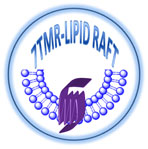Dynamic targeting of the agonist-stimulated m2 muscarinic acetylcholine receptor to caveolae in cardiac myocytes
| Title | Dynamic targeting of the agonist-stimulated m2 muscarinic acetylcholine receptor to caveolae in cardiac myocytes |
| Publication Type | Journal Article |
| Year of Publication | 1997 |
| Authors | Feron, O, Smith TW, Michel T, Kelly RA |
| Journal | J Biol Chem |
| Volume | 272 |
| Pagination | 17744-8 |
| Date Published | Jul 11 |
| ISBN Number | 0021-9258 (Print)0021-9258 (Linking) |
| Accession Number | 9211926 |
| Keywords | *Caveolins, Animals, Antibodies/metabolism, Atropine/pharmacology, Carbachol/pharmacology, Caveolin 3, Centrifugation, Isopycnic, Endothelium, Vascular/enzymology, Membrane Proteins/immunology/isolation & purification, Muscarinic Agonists/*metabolism, Muscarinic Antagonists/metabolism, Muscle Proteins/immunology/isolation & purification, Myocardium/*metabolism, Nitric Oxide Synthase/isolation & purification, Quinuclidinyl Benzilate/metabolism, Radioligand Assay, Rats, Receptor, Muscarinic M2, Receptors, Muscarinic/isolation & purification/*metabolism |
| Abstract | In cardiac myocytes, as well as specialized conduction and pacemaker cells, agonist binding to muscarinic acetylcholine receptors (mAchRs) results in the activation of several signal transduction cascades including the endothelial isoform of nitric-oxide synthase (eNOS) expressed in these cells. Recent evidence indicates that, as in endothelial cells, eNOS in cardiac myocytes is localized to plasmalemma caveolae, specialized lipid microdomains that contain caveolin-3, a muscle-specific isoform of the scaffolding protein caveolin. In this report, using a detergent-free method for isolation of sarcolemmal caveolae from primary cultures of adult rat ventricular myocytes, we demonstrated that the muscarinic cholinergic agonist carbachol promotes the translocation of mAchR into low density gradient fractions containing most myocyte caveolin-3 and eNOS. Following isopycnic centrifugation, the different gradient fractions were exposed to the muscarinic radioligand [3H]quinuclidinyl benzilate (QNB), and binding was determined after membrane filtration or immunoprecipitation. In a direct radioligand binding assay, we found that [3H]QNB binding can be detected in caveolin-enriched fractions only when cardiac myocytes have been previously exposed to carbachol. Furthermore, most of this [3H]QNB binding can be specifically immunoprecipitated by an antibody to the m2 mAchR, indicating that the translocation of this receptor subtype is responsible for the [3H]QNB binding detected in the low density fractions. Moreover, the [3H]QNB binding could be quantitatively immunoprecipitated from the light membrane fractions with a caveolin-3 antibody (but not a control IgG1 antibody), confirming that the m2 mAchR is targeted to caveolae after carbachol treatment. Importantly, atropine, a muscarinic cholinergic antagonist, did not induce translocation of m2 mAchR to caveolae and prevented receptor translocation in response to the agonist carbachol. Thus, dynamic targeting of sarcolemmal m2 mAchR to caveolae following agonist binding may be essential to initiate specific downstream signaling cascades in these cells. |
| URL | http://www.ncbi.nlm.nih.gov/entrez/query.fcgi?cmd=Retrieve&db=PubMed&dopt=Citation&list_uids=9211926 |
